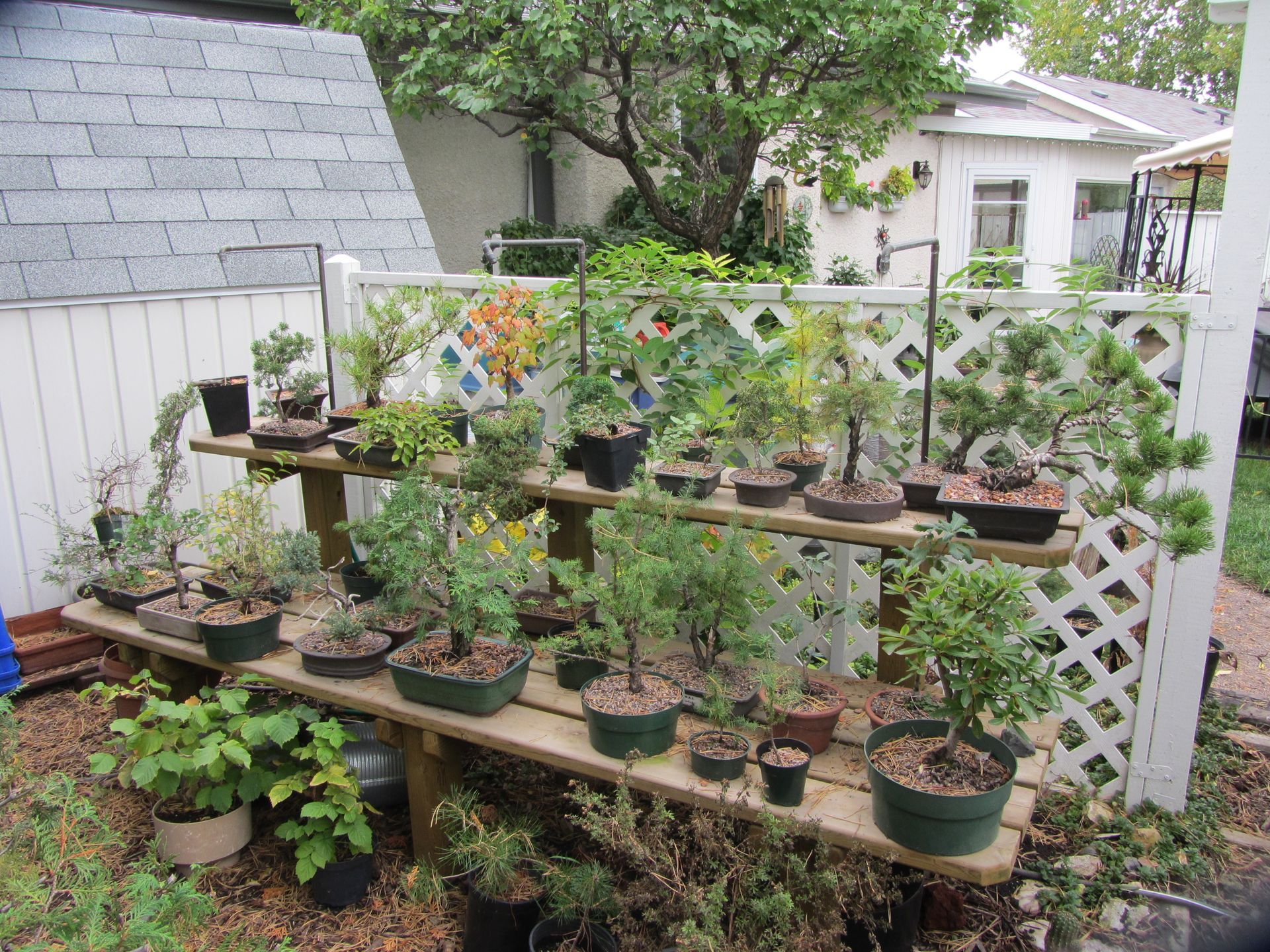
IS BONSAI FOR YOU?
Be prepared, be successful.
Growing and styling bonsai can be a very enjoyable and rewarding hobby. However, there are a few things to which you must commit for success. In this respect, growing a bonsai may be compared to having pets, except that they don’t wake you at night.
Invest some time in your trees nearly every day.
Five minutes of your time may be sufficient on many days, but it must be nearly daily—bonsai is not a ‘weekend-only’ hobby. Vacations can be easily accommodated with a bit of planning. If you grow only outdoor varieties, these will be dormant under the snow all winter. If you want a year-round hobby, try growing tropical trees. On about a weekly basis, you will need to spend a bit more time with your trees, inspecting them and possibly fertilizing or pruning them. This may take an hour or two for just a few trees and is often the most enjoyable part of the hobby. Occasionally you may need to intervene to deal with insects or other pests.
Bonsai has been said to consist of one part horticulture, one part art form, and one part patience.
Your trees will only look old and venerable after a period of time. They may look attractive in a few weeks and pretty good in a year or two, but you must be patient. Watching them develop over time is part of the enjoyment of the hobby. Having trees that you have created and at various stages of development provides great satisfaction.
You must accept that the trees will be outdoors in the summer, on a patio, or at least get lots of fresh air and light.
The image of a bonsai tree gracing our home and adding a touch of interest to the decor is compelling. The reality is that bonsai trees must be kept where conditions are best for the tree. Trees can be displayed indoors for a few days at a time, but they will not grow well there. Some tropicals can be grown reasonably well in a specifically designed area with dedicated lighting and air movement if no outdoor area is available. However, even tropical bonsai grow best outdoors during frost-free periods.
You need not be a horticultural expert.
However, you must be willing to learn a bit about fundamental plant growth, types of trees, and their unique growing habits, if you expect to succeed. There will likely be an occasional need to deal with plant pests or diseases, and some introductory study of these and handling of remedies is required. The club’s support is available on both counts, and an introductory course is highly recommended.
Bonsai combines horticulture and art.
There are some basic guidelines for the art form and techniques for pruning and shaping, which anyone can learn. However, the prime directive in bonsai is the health of the tree. Once you know the basics, you have the freedom and knowledge to create a bonsai that makes the most out of the specimen at hand.
A limited number of tools and supplies are necessary to start.
Tools and supplies will increase as the number of trees maintained grows. However, less expensive options may work for a while.


